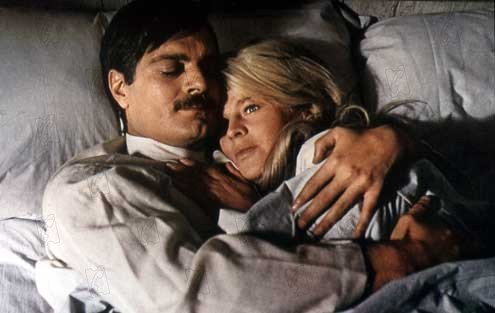
Title/Year: Doctor Zhivago (1965)
Director/Birth Country/Year Born: David Lean/England/1908
Budget: $11 Million
Gross: $111,721,910
Synopsis: A Russian doctor falls in love with a political activist, all be it with they are both married, during the Bolshevik revolution of the early 20th Century. The doctors half brother searches to locate what might be his long lost niece.
Narrative and Visual Keywords:WWI, WWII, Epics, Russian, Hero, Love, Politics.
Character Arc: A film of love, passion and discovery during the time of war in the first half of the 20th Century. The film follows Yuri Zhivago from his orphaned youth to his love lorn death. Zhivago must do what his heart tells him to choose what he considers the right morale part for himself and his country.
Camera/lighting/editing technique: Long takes, widescreen format, dialogue driven scenes.
Political/ Social Commentary: An adulterous love triangle set to the background of the Bolshevik Revolution. Morality of the upper and lower social classes.
Historical Relevance/ Recognition: Won 5 Academy Awards. (Art Direction, Cinematography Adapted Screenplay, Costume Design, Original Score). Costume design heavily influenced nineteen-sixties apparel design and fashion.
Notable Collaboration: Director David Lean worked with actor Alec Guinness six times during their careers. These films included: Great Expectations, Oliver Twist, The Bridge on the River Kwai, Lawrence of Arabia, Doctor Zhivago, A Passage to India)
Random fact, Etc.: Doctor Zhivago adjusted for inflation is the 8th highest grossing film in the United States.
Sources Cites:
http://www.boxofficemojo.com/movies/?id=doctorzhivago.htm
http://en.wikipedia.org/wiki/Doctor_Zhivago_%28film%29
Responce Questions:
1) Doctor Zhivago is full of elements of social class differences. In the film the Labour Party can be seen in a "peaceful" march, until they are brutally attacked by the Imperial Army guards, riding upon horseback, with swords drawn. Before this attack upon the innocent citizens, they marchers are seen singing in unison out in the cold, meanwhile the upper-class people are parting inside a warm, expensive restaurant. This clearly shows a division between the social classes.
2) One character in particular Pasha Antipov a representative of the Labour Party, whom later becomes Strelnikov a Red Army Commander, is seen as having characteristic of, literally, the wounded solider, and that of a strong individual with a high moral code. He is one one that whole heartedly believes that the power should belong to the people.
3) There were a number of melodramatic elements to Doctor Zhivago. Being a David Lean film what can expect just that. High character development, majestic epic scenes, and high tension elements. In the case of Doctor Zhivago, it is sometimes what isn't said verbally by a character but what is said through a characters facial expressions and mannerisms. A number of times the viewing audience only sees the expression on Yuri Zhivago's face, the emotion is clearly displayed through Omar Sharif's acting abilities.
4) The enemies portrayed in the film were seen more from a neutral eye. Whether it was the Labour Party or the Imperial Russian Army, they were seen from an objective viewpoint. Both parties involved were inclined to violent tendencies in general. Another "enemy" characterized in the film was that of "Morality". Here are main characters (Yuri, Lara, Victor) must choose what they feel is morally appropriate considering their situation.
No comments:
Post a Comment